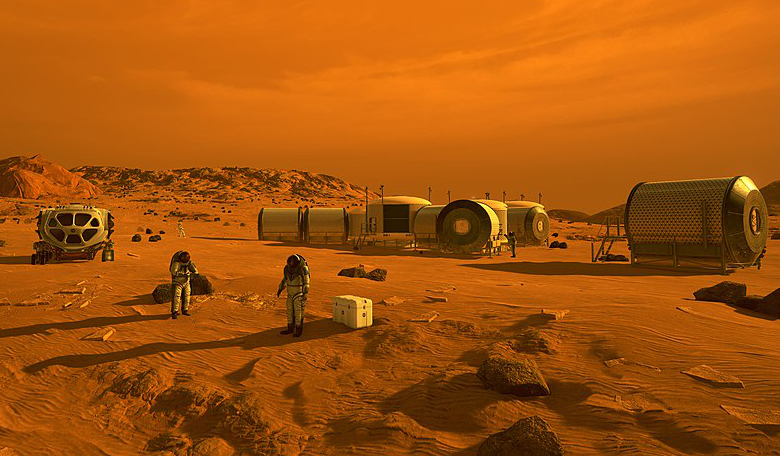With SpaceX founder Elon Musk racking up Starship prototypes as fast as he can build them in order to build colonies on Mars – work on SN20, or Ship 20 is currently in progress – and China suggesting it is also going to build a base on the Red Planet in the coming decade, when would be a good time, from an astronaut point of view, to head to our neighbouring planet?
According to simulations run by a team of international scientists, the best time to head to Mars is when the rate of energetic solar particles streaming from the Sun are the highest; I,e at a solar maximum.
That might seem counterintuitive, but say the team headed by Dr. Mikhail Dobynde at Skolkovo Institute of Science and Technology, Moscow, Russia, the solar particles will help deflect another type of hazardous particle, galactic cosmic rays (GCR).
Cosmic rays are high-energy protons and atomic nuclei that come from outside the Solar System but primarily from within our Milky Way galaxy.
They move through space at nearly the speed of light and because these stripped down atoms are so highly energetic they can damage tissue and DNA in genes.
Luckily for us, Earth's atmosphere and the magnetic fields that surround our planet help shield us from the harmful ionising effects of cosmic rays. But unfortunately for those who have ventured out beyond the protective bubble of Earth’s skies, cosmic rays can pass practically unimpeded through a typical spacecraft or the skin of an astronaut.
To put it in perspective, if a human receives one Milli-Sieverts (mSv) of ionising radiation, that is the equivalent of being exposed to about three chest x-rays.
Astronauts on the other hand can be exposed to doses in the range from 50 to 2,000 mSv, which is similar to having 150 to 6,000 chest x-rays.
It is no surprise then astronauts face an increased risk of getting cancer, central nervous system disorders, and degenerative diseases while going about their daily job in space.
With a trip to Mars taking around 6 months, minimising that risk is of utmost importance as there is only so much shielding a spaceship can be fitted with before it gets too heavy and expensive to launch.
There is no way to combat space radiation completely, at present anyway, but getting the timing right could lessen the impact of exposure.
And that timing is around the mid 2030s suggests Dobynde and colleagues.
Both cosmic ray and solar particle intensity varies during the 11-years solar cycle, with the latter decreasing during solar activity minima (min) and increasing during maxima (max).
Conversely, cosmic ray activity is most enhanced during solar minimum and lowest during solar maximum.
This, say Dobynde and team, is a good thing because when the fluxes in solar particles are high they can help deflect harmful cosmic rays. But can adapting to space weather as opposed to going against it really help astronauts?
To predict just what radiation levels astronauts could be exposed to inside a spacecraft, Dobynde and colleagues analysed how 28 fully ionised cosmic ray elements from hydrogen to nickel propagate through a spacecraft shell during different phases of a solar cycle.
Protons and nine ion species to model solar particle irradiation were also included in the models and varying thicknesses of shielded were tested.
The team found that the best time to start a human flight to Mars and back is during the decaying phase of solar activity.
For a mission to last four years, average shielding of 10 centimetres of aluminum would be needed so that the allowed radiation risk limit would not be exceeded.
“This study shows that while space radiation imposes strict limitations and presents technological difficulties for the human mission to Mars, such a mission is still viable”, the authors write in their research paper.
“Since the next solar max is coming up fairly soon – somewhere around the year 2025 – Mars might just have to wait until the mid-2030s”, Dobynde says.
These findings are reported in Space Weather; Beating 1 Sievert: Optimal Radiation Shielding of Astronauts on a Mission to Mars











